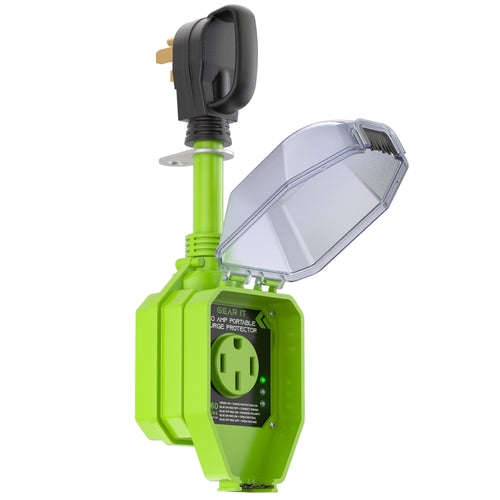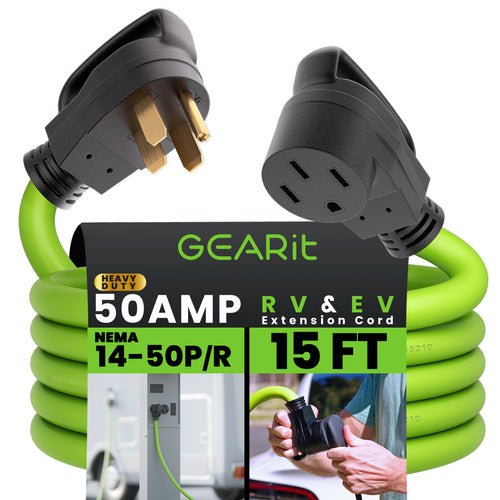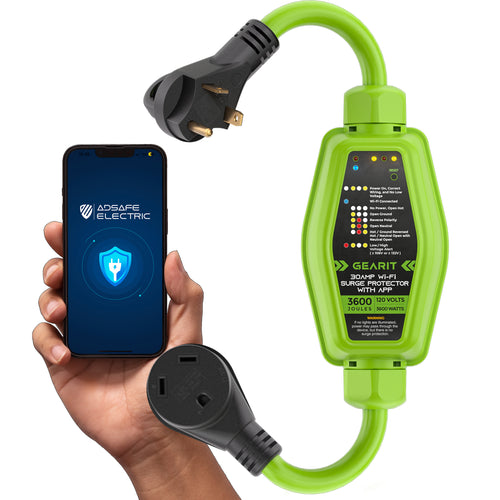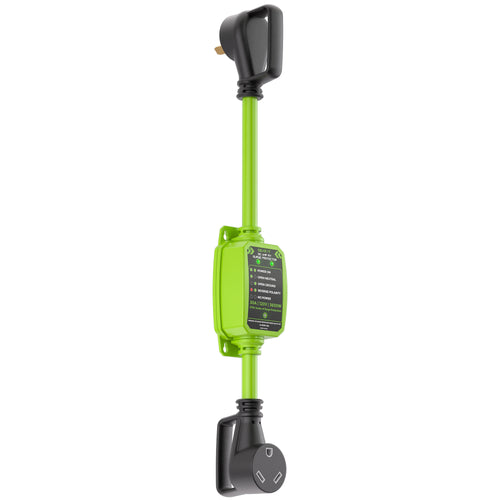
Embarking on your first RV adventure is an exciting milestone. The freedom of the open road, the allure of new destinations, and the comfort of having your home on wheels combine to create a unique and thrilling experience. However, to ensure your journey is smooth and enjoyable, it's essential to understand your RV's electrical system, particularly the plugs and chargers you'll be using. Here’s everything you need to know to get started.
Essential Information for New RV Owners About Plugs and Chargers
Understanding RV Plugs
Your RV’s electrical system is designed to connect to various power sources, typically found at campgrounds and RV parks. The most common types of plugs you'll encounter are:
• NEMA 14-50 Plug: This is a 50 Amp plug that provides 240 volts. It is often used for larger RVs with higher power demands, such as multiple air conditioners and heavy-duty appliances.
• 30 Amp Plug: This plug delivers 120 volts and is suitable for smaller to medium-sized RVs. It can power essential systems like lights, water heater, and one air conditioner.
• 50 Amp Plug: Similar to the NEMA 14-50, this plug also provides 240 volts but is designed differently. It offers more versatility for RVs with substantial electrical needs.
Chargers and Their Importance
RV chargers, often referred to as converters or inverters, play a crucial role in managing your RV's electrical system. They convert AC power (from shore power or a generator) into DC power to charge your RV's batteries and run DC appliances. Understanding how to use and maintain these chargers is vital for a successful trip.
Checklist of Items to Bring on Your First RV Trip
To ensure you have everything you need for your electrical system, here’s a checklist to guide you:

Tips for Ensuring Your RV’s Electrical System is Ready for Travel
Before hitting the road, it’s important to make sure your RV’s electrical system is in top shape. Here are some tips to help you prepare:
• Inspect Your Plugs and Cords
Check your plugs and cords for any signs of wear and tear, such as fraying or corrosion. Replace any damaged components to prevent electrical hazards.
• Test Your Power Sources
Use a multimeter to test the voltage of your power sources before plugging in your RV. This can help you avoid connecting to a faulty or unsafe power supply.
• Understand Your Power Limits
Be aware of your RV’s power limits. For example, a 30 Amp system cannot handle the same load as a 50 Amp system. Overloading your electrical system can cause breakers to trip or damage your appliances.
• Use a Surge Protector
Always use a surge protector when connecting to shore power. This will protect your RV’s electrical system from unexpected power surges and voltage fluctuations.
• Check Your Batteries
Ensure your RV batteries are fully charged and in good condition. Regularly check the water levels in lead-acid batteries and clean any corrosion on the terminals.
• Practice Energy Management
Be mindful of your energy usage, especially if you are on a 30 Amp system. Try not to run multiple high-power appliances simultaneously to avoid tripping the breaker.
• Keep Spare Parts and Tools
Having spare parts, such as fuses and connectors, along with basic electrical tools, can save you from potential headaches on the road.
By understanding your RV’s electrical system and preparing adequately, you can avoid many common pitfalls and ensure a smooth, enjoyable trip. With the right knowledge and preparation, your first RV adventure will be the beginning of many memorable journeys. Safe travels!






















































